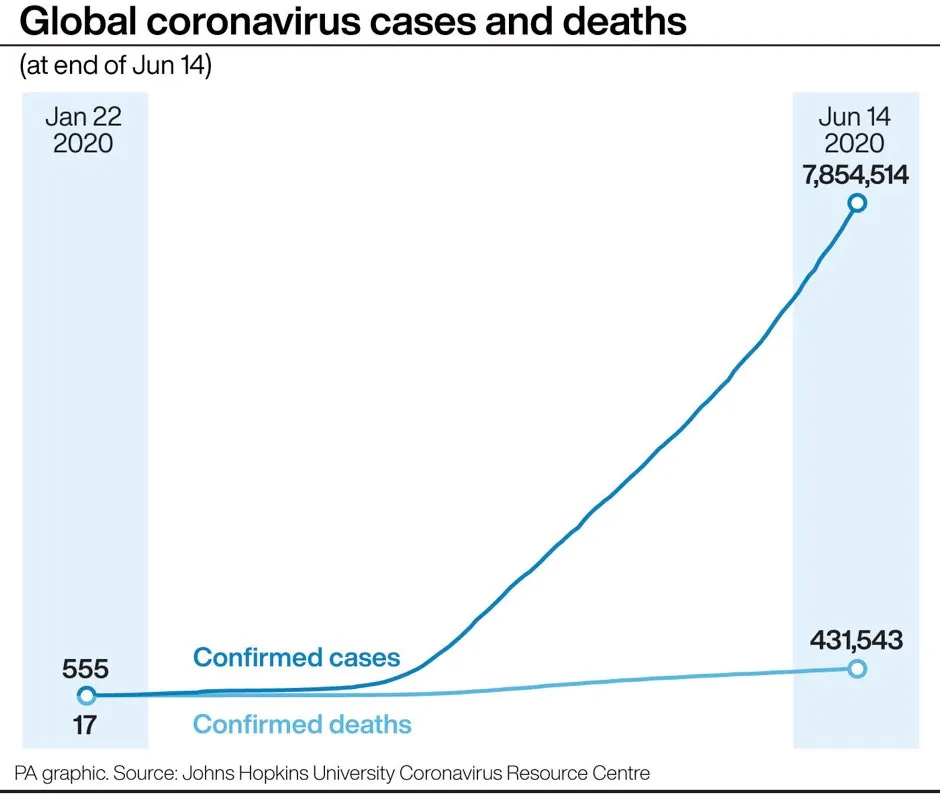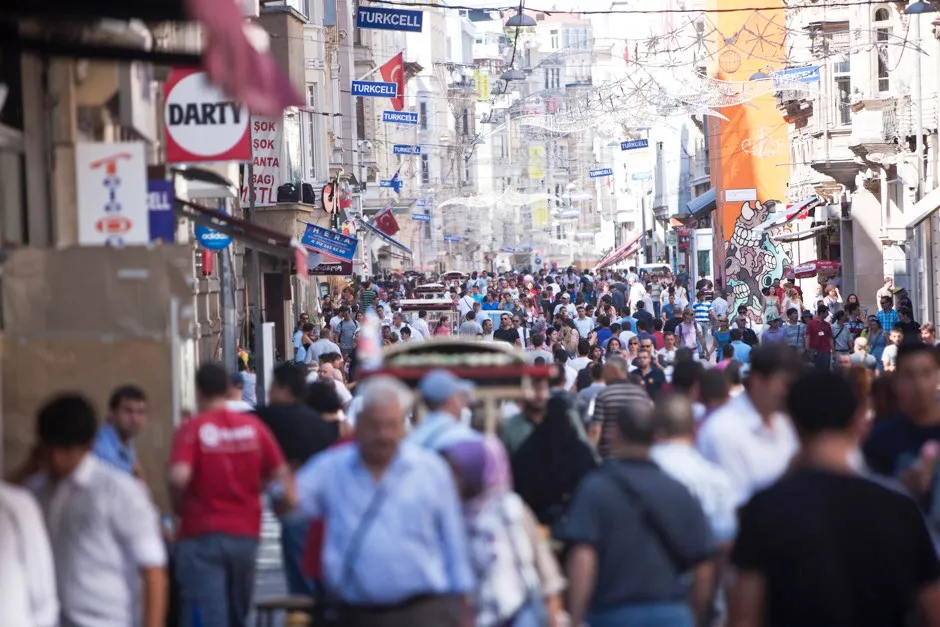One in five people across the world has an underlying health condition that could increase their risk of severe coronavirus if infected, a new study suggests.
Using data from 188 countries, a modelling study estimated 1.7 billion people, 22 per cent of the world population, have at least one underlying health condition that puts them at increased risk.
Researchers say that although estimates give an indication of the number of people who should be prioritised for protective measures, not all of these individuals would go on to develop severe symptoms if infected.
According to the study, 4 per cent of the world’s population would require hospitalisation if infected.
The authors say this suggests the increased risk of severe COVID-19 could be quite modest for many with underlying conditions.
Read the latest coronavirus news:
- Coronavirus: Mandatory face masks 'could save up to 50,000 lives'
- Link between coronavirus and heart diseases undergoes major study
- Coronavirus entered the UK 'at least 1,356 times'
Associate Professor Andrew Clark, from the London School of Hygiene and Tropical Medicine (LSHTM), said: “As countries move out of lockdown, governments are looking for ways to protect the most vulnerable from a virus that is still circulating.
“We hope our estimates will provide useful starting points for designing measures to protect those at increased risk of severe disease.
“This might involve advising people with underlying conditions to adopt social distancing measures appropriate to their level of risk, or prioritising them for vaccination in the future.”

The World Health Organisation (WHO) and public health agencies in the UK and USA identify cardiovascular disease, chronic kidney disease, diabetes and chronic respiratory disease as risk factors for severe coronavirus.
The new study, in The Lancet Global Health journal, provides global, regional and national estimates for the number of people with underlying health conditions.
The authors caution that they focused on underlying chronic conditions and did not include other possible risk factors that are not yet included in all guidelines, such as ethnicity and socioeconomic deprivation.
They say that the estimates are therefore unlikely to be exhaustive, but serve as a starting point for policy-makers.
The authors based their estimates on disease prevalence data from the Global Burden of Diseases, Injuries and Risk Factors Study (GBD) 2017, UN population estimates for 2020 and the list of underlying health conditions relevant to COVID-19, as defined by current guidelines.
To help determine the degree of increased risk, the researchers also provided separate estimates of the proportion of all people – with and without underlying conditions – who would require hospitalisation if infected.
They calculated those at high risk using infection hospitalisation ratios for COVID-19 and made adjustments for differences between countries.
Countries and regions with younger populations have fewer people with at least one underlying health condition, while those with older populations have more people with at least one condition.

Globally, less than 5 per cent of people aged under 20 years, but more than 66 per cent of those aged 70 and above, have at least one underlying condition that could increase their risk of severe coronavirus, researchers say.
Among the working age population (15 to 64 years), 23 per cent are estimated to have at least one underlying condition.
While the prevalence of one or more condition listed on current guidelines is similar between the sexes, the authors assumed males were twice as likely as females to require hospitalisation if infected.
Dr Rosalind Eggo, from LSHTM, said: “Our estimates suggest that age-based thresholds for shielding could play a role in reducing deaths and reducing the number of people who require hospital treatment, but the choice of threshold needs to be balanced against the proportion of people of working age affected, as well as the health and economic consequences that might be associated with long periods of isolation.”
How can I protect myself from the coronavirus when shopping?
You’ll have seen signs in your local supermarket advising you to keep two metres from others while moving around the store. This is key to reducing your chances of catching the virus while shopping.
The coronavirus SARS-CoV-2 is spread through respiratory droplets that leave our mouth and nose when we cough, sneeze, or sometimes even talk. The droplets sprayed out by an infected person will contain the virus, which could then enter your body via your mouth, nose or eyes (this is why you shouldn’t be touching your face).
Respiratory droplets don’t usually travel more than one metre, so by keeping two metres from others, you’ll reduce the likelihood of being in the firing line. To make it easier to keep your distance, try to shop during off-peak hours, choose a store that’s limiting the number of people who can be inside at any one time, and use self-checkout if you can.
Keeping your hands clean is the other main thing you can do. If possible, wipe the trolley or basket handles with a disinfectant wipe when you arrive at the store. When you get home, wash your hands or use hand sanitiser before and after unpacking your bags.
A US study found that the coronavirus can survive for up to 24 hours on cardboard, and up to three days on hard, shiny surfaces such as plastic, so wiping down your purchases with a disinfectant spray or a soapy cloth before you put them away is another good habit to get into.
Read more:
